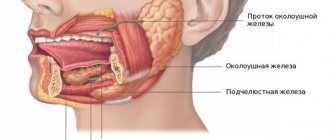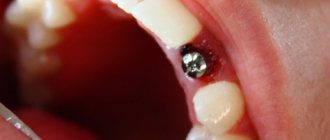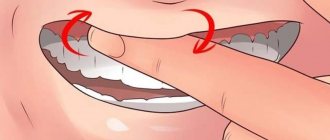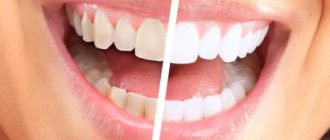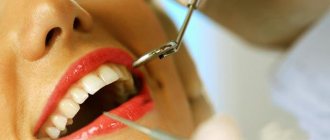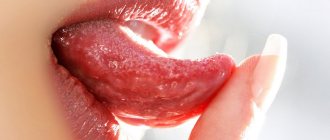What is gingivectomy?
Gingivectomy is a dental operation performed to remove inflamed or pathologically overgrown gum edges and reduce gum pockets. In the absence of timely treatment, the inflammatory process begins to affect deeper and deeper layers of tissue, thereby causing detachment of the gums from the walls of the tooth and the formation of pockets. In this case, gingivectomy allows not only to relieve inflammation in periodontal tissues and prevent its spread to bone tissue, but also to correct the gingival margin, solving the problem of aesthetic imperfections.
Signs of an inflammatory process
Often, the growth of gum tissue can be seen visually: soft tissue begins to cover the crowns of the teeth, which is why they look recessed in the gum. But often this process is accompanied by gingivitis - inflammation of the gums. It is characterized by:
- redness and swelling of the gums,
- hard or soft deposits on teeth,
- bleeding gums when brushing,
- pain when eating hard, hot or cold food,
- bad breath.
Gingivitis in mild forms is treated conservatively, with local use of antibacterial and antiseptic and painkillers. Also, for gingivitis, professional teeth cleaning and serious preventive oral hygiene are indicated. But if the inflammation has led to an increase in the gum pocket, then the patient is prescribed a gingivectomy.
Important! In the initial stage, gum overgrowth can be treated with conservative methods, such as curettage (cleaning gum pockets), taking antibiotics (including local ones), and scraping the roots of teeth.
Indications and contraindications for gingivectomy
Gingivectomy is prescribed only for strict indications, since it is, although minor, still a surgical intervention that requires the presence of certain pathological conditions. Surgery may be prescribed in cases where drug treatment has not brought a positive result.
Gingivectomy is indicated in the following cases:
— For various gum diseases, in which significant deformation of soft tissues occurs, due to which they become non-viable.
— With pathological growth of the gingival margin as a result of dental diseases such as gingitis and periodontitis. In severe forms of these diseases, periodontal pockets form, which help maintain inflammation in the gums and also serve as a reservoir for the accumulation of pathogenic microflora.
— With overhanging gums and minimal crown height. In this situation, gingivectomy is performed to improve the aesthetics of the smile.
- For hygienic reasons. Bacteria that accumulate in the gum pockets are not only a source of infection in the mouth, but also lead to inflammation of the soft tissues, followed by the process spreading to the bone tissue, which over time can even lead to tooth loss.
However, as with any surgical intervention, there are also a number of contraindications for gingivectomy.
The operation is contraindicated in the following cases:
— In the presence of an inflammatory process that has already affected the bone structures due to the possible risk of tooth loss.
- If the gum attachment area is too narrow, as this may lead to the impossibility of closing the resulting tissue defect.
- If there is a frenulum at the site of the intended incision.
— In the presence of deep intraosseous pockets.
— For diseases of the cardiovascular system in the acute period, weak immunity, diseases of the blood clotting system.
In what cases is it carried out?
The procedure is carried out in cases where the examination has been completed and there are no serious contraindications.
| Prescriptions | Not recommended |
Gingivectomy is performed for the following indications:
| Experts do not recommend performing the procedure with the following main contraindications:
|
Please note that if the procedure is carried out with a number of such contraindications, the structure of the teeth may be damaged, which over time begin to fall out. Complications may also worsen, and the soft tissues will begin to become inflamed, and then fester and cause intense pain.
Therefore, before carrying out the procedure, you need to be examined by a dentist and make sure that gingivectomy is possible and there are no serious contraindications.
How is the operation performed?
Before a gingivectomy, it is important to have a professional oral hygiene performed to remove plaque and tartar.
The operation itself lasts about 30 minutes, usually under local anesthesia. After anesthesia, the doctor treats the gums with an antiseptic solution and measures the depth of the gum pockets. Then the specialist excises the tissue with a scalpel or laser and removes the pathological edge of the gum. After this, curettage is performed - scraping of destroyed periodontal tissues, soft and hard microbial plaque). Upon completion of the operation, the doctor treats the gums with an antiseptic solution and applies bandages.
With a successful operation, complications are almost impossible. The recovery time for patients after this surgery is usually short. It usually takes 4-5 weeks for the gums to heal completely. Intense stress on the gums during the recovery period after surgery is contraindicated.
The main condition for the absence of complications after gingivectomy is compliance with the doctor’s recommendations, namely:
— Brushing your teeth with a soft toothbrush. - Avoiding eating solid, too cold or hot foods, quitting alcohol and smoking until the tissues heal. — Temporary limitation of chewing load.
Rehabilitation
If the surgical intervention is successful, the following recommendations must be followed:
- During the healing period of the operated area, give up alcohol and smoking.
- Use antiseptic rinses for the first 48 hours.
- Minimize the chewing load on the operated area.
- Avoid consumption of solid foods, which can cause injury to gum tissue.
- Use a soft toothbrush and toothpastes enriched with herbal extracts.
Additionally, after tooth gingivectomy, it is recommended to limit physical activity. More complete information about possible prescriptions can be obtained from a specialist. Following the dentist's instructions will eliminate possible complications such as increasing itching, sudden increases in temperature and pain.
Benefits of laser gingivectomy
Gingivectomy is performed using different methods: using traditional surgery with a scalpel or using a laser.
Thanks to minimizing the development of complications after surgery, as well as eliminating possible infections that occur during traditional surgery, laser gingivectomy is increasingly being used in modern dentistry. The use of a laser instead of a scalpel ensures faster healing, reducing the postoperative recovery period by several times.
Under the influence of a laser beam, the edges of the wound remain sterile, pathogenic microflora of the oral cavity are neutralized, and the risk of bleeding is minimized.
The main advantages of using a laser for gingivectomy:
— Complete absence of risk of infection — No or minimal blood loss — Exceptional precision of laser action — Short period of tissue regeneration, significantly shorter than with traditional surgery — No harm to healthy dental and periodontal tissues — No pain or discomfort — Minimal contraindications
Cost of gingivotomy surgery
The question of cost usually begins with any patient request for medical services. The size of the upcoming monetary costs depends on the price of consumables involved in the operation, on the qualifications of the surgeon, and on the category of the clinic. The use of a laser makes the procedure more expensive. Also affecting the final cost is preliminary diagnosis, treatment of caries and other measures for sanitation of the oral cavity.
Catarrhal and hypertrophic gingivitis symptoms and treatment in adults
Laser gingivotomy - surgical treatment of complex forms of periodontitis
Laser gingivectomy in the area of one tooth
The roots of the teeth are exposed - what to do and how to treat them
Treatment of generalized moderate and severe periodontitis
Splinting teeth for periodontitis with fiberglass and tape
Laser gingivectomy in Krasnodar
Laser gingivectomy surgery in Krasnodar is performed at the highest level in the Symmetry clinic of modern dentistry and cosmetology. The guarantee of your beautiful and healthy smile is our experienced specialists and the most innovative equipment. In our clinic, vestibuloplasty is performed using modern and safe Doctor Smile D5 laser equipment.
You can find out more about a procedure such as laser gingivectomy by scheduling a consultation with our specialists: by phone in Krasnodar, or by using the feedback form. The cost of laser gingivectomy in Krasnodar is indicated in the Cost of Services section.
Cost of treatment
The final price of the operation is influenced by many factors: procedure technique, area of the operated area, type of anesthesia. If anesthesia or sedation is used, the cost will increase.
When using laser equipment, the price will be higher than when using a scalpel. However, the risk of complications is significantly reduced, and gum health will be restored faster.
Dental surgeons at our clinic use modern equipment. We use safe drugs for sedation or anesthesia. Prices are discussed with the patient before treatment begins.
How is gingivotomy performed?
In a standard situation, the operation lasts no more than 30 minutes. The sequence of actions is divided into several stages:
- Anesthesia of the surgical area using local (less commonly general) anesthesia.
- Making a vertical incision to the full depth of the periodontal pocket.
- Separation of the edges of the flap with a rasp to expose the affected tissue.
- Manipulations in the opening area (pocket curettage, abscess removal, washing with isotonic solutions and wound antiseptic).
- Treatment with proteolytic enzymes; when opening a bone pocket, filling with biologically active pastes.
- Closing the wound using medical glue (lateral surface of the gum) or suturing (only on the frontal surface) with the installation of drainage (if necessary).
- Fixation with film or bandage with medications.
Methods for cutting the mucous membrane:
- strictly along the axis of the tooth;
- with distal displacement;
- through the papilla between the teeth;
- T-shape;
- semilunar method.
On a note! Gingivotomy is performed in the area of no more than 2-3 teeth at a time.
Rehabilitation period
After surgery, the most important issue is proper oral hygiene. Teeth brushing is carried out in a gentle manner, using brushes with soft bristles. In some cases, doctors recommend replacing teeth brushing with rinsing with a special antiseptic solution. It is also important to follow a diet: do not eat too hot or too cold food, do not eat solid foods (nuts, seeds, chips, etc.). Doctors recommend refraining from smoking and drinking alcohol for the entire rehabilitation period.
